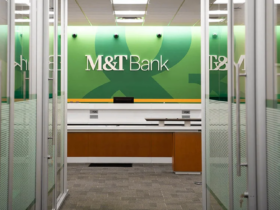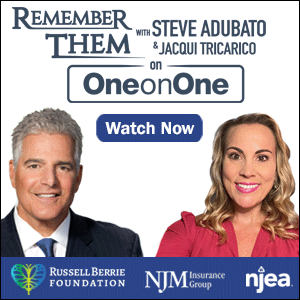 COVID-19 has propelled ESG from a regulatory obligation to a collective expectation
COVID-19 has propelled ESG from a regulatory obligation to a collective expectation
By Tracy Straka, Executive Vice President and Corporate Secretary at Creamer Environmental Inc.
The COVID-19 pandemic created rapid, large-scale change in the way people live, work and interact. It forced many to discover new ways of doing things and became not only a stark reminder of our vulnerabilities but, as well, a demonstration of the interconnectivity and resiliency of people worldwide. It also surfaced tensions, inequalities and injustices that long predated 2020, forcing a spotlight onto the human aspects of corporate ESG initiatives and putting a very public face to the shortcomings and successes of many of these efforts.
ESG is the acronym for environmental, social and governance. These concepts encompass a broad set of issues, from a company’s carbon dioxide footprint to fair labor practices, corruption, sustainability and much more. But in in its simplest form, it essentially describes a company’s commitment to people, community and the environment.
ESG is a form of corporate self-regulation that gives a company a formal platform to demonstrate that its actions have a positive impact on the environment, consumers, employees, communities and the public. It has traditionally been a non-financial measure of business practices that investors and shareholders look at to evaluate how these actions contribute directly to an organization’s risk management profile, environmental stewardship and corporate social responsibility. But due in part to COVID-19’s inequitable human impact this idea is now moving beyond the investment world and into the mainstream and raising expectations about the social accountability of the corporate environment
Even before the COVID-19 outbreak, certain ESG criteria factors had gained popular momentum globally, with major economies around the world mandating specific tracking and reporting obligations for many industries. Most of this reporting was geared towards providing data to investors and regulatory bodies, with the ‘E’ and ‘G’ aspects getting most of the attention.
Investors and regulators identified most readily with the ‘G’, which documents and evaluates the internal planning, monitoring and measuring processes that a company uses to govern itself and includes activities such as risk management, legal and regulatory compliance, materials sourcing, resilience and meeting shareholder expectations with respect to sustainability and social governance.
Thanks in large part to government regulations, mainstream and social media – and Mother Nature’s almost weekly reminders about climate change – the general public easily identifies with the ‘E’, which measures things that contribute to carbon emissions and climate change such as energy management and consumption, water and wastewater management, emissions and product lifecycles. These items are easily quantified and companies can demonstrate a numeric reduction as they improve upon their energy consumption.
 The “S” factor is more ambiguous, as many of its elements are subjective and not easily measured. This aspect of ESG addresses the relationships and reputation a company has created with its various stakeholders and relates to issues like employee engagement, diversity and inclusion, health and safety, human rights, community relations, social justice, and labor practices.
The “S” factor is more ambiguous, as many of its elements are subjective and not easily measured. This aspect of ESG addresses the relationships and reputation a company has created with its various stakeholders and relates to issues like employee engagement, diversity and inclusion, health and safety, human rights, community relations, social justice, and labor practices.
The COVID-19 pandemic, along with activism associated with racial inequality and other social injustice movements brought many social issues to the forefront. People of lower socioeconomic status, especially those with lower income, wealth, and education, were most impacted by the pandemic in terms of health, working, and living conditions. Many of these individuals work in industries and under conditions that leave them especially vulnerable to pandemic exposure, and we heard story after story about how health care aides, factory and supermarket workers and others in similar occupations had a much higher incidence of COVID infection and job losses.
Thanks in part to social media, many companies were exposed as having deficient “S” practices – some by their own employees. People took notice and demanded change. Because of this, employees and investors have become very vocal about their expectations for corporate accountability on issues like employee health and safety, workforce policies, job security, labor practices and business resilience. People now expect to see tangible commitments and verifiable change.
Even as life begins to return to “normal,” employees, customers and other stakeholders expect companies to continue to take a stand on significant ESG issues. The paradigm has shifted from green vs. gold to green equals gold. It is no longer sufficient, for example, to equate the number of minorities on your board with whether you truly are an inclusive organization.
Prospective job candidates are evaluating job opportunities in part based on a company’s ESG commitments. Socially conscious consumers are voting with their wallets, encouraging businesses to take a closer look at their operations and roles as responsible employers. Investors are demanding that companies continue to do more across all three ESG pillars and expect transparency and detailed ESG reporting of measurable accomplishments and future goals.
Businesses are responding by mainstreaming their ESG efforts and communicating them by centering their marketing campaigns around corporate sustainability strategies and improvements, with the idea that framing those approaches openly and presenting them effectively will increase employee morale and foster customer loyalty.
As the ESG initiative continues to evolve, there is sure to be more to come on its recast from back office regulatory compliance to front-and-center mainstream business strategy. The effects of societal influence will continue to push businesses towards a more collaborative and accountable ideal.















